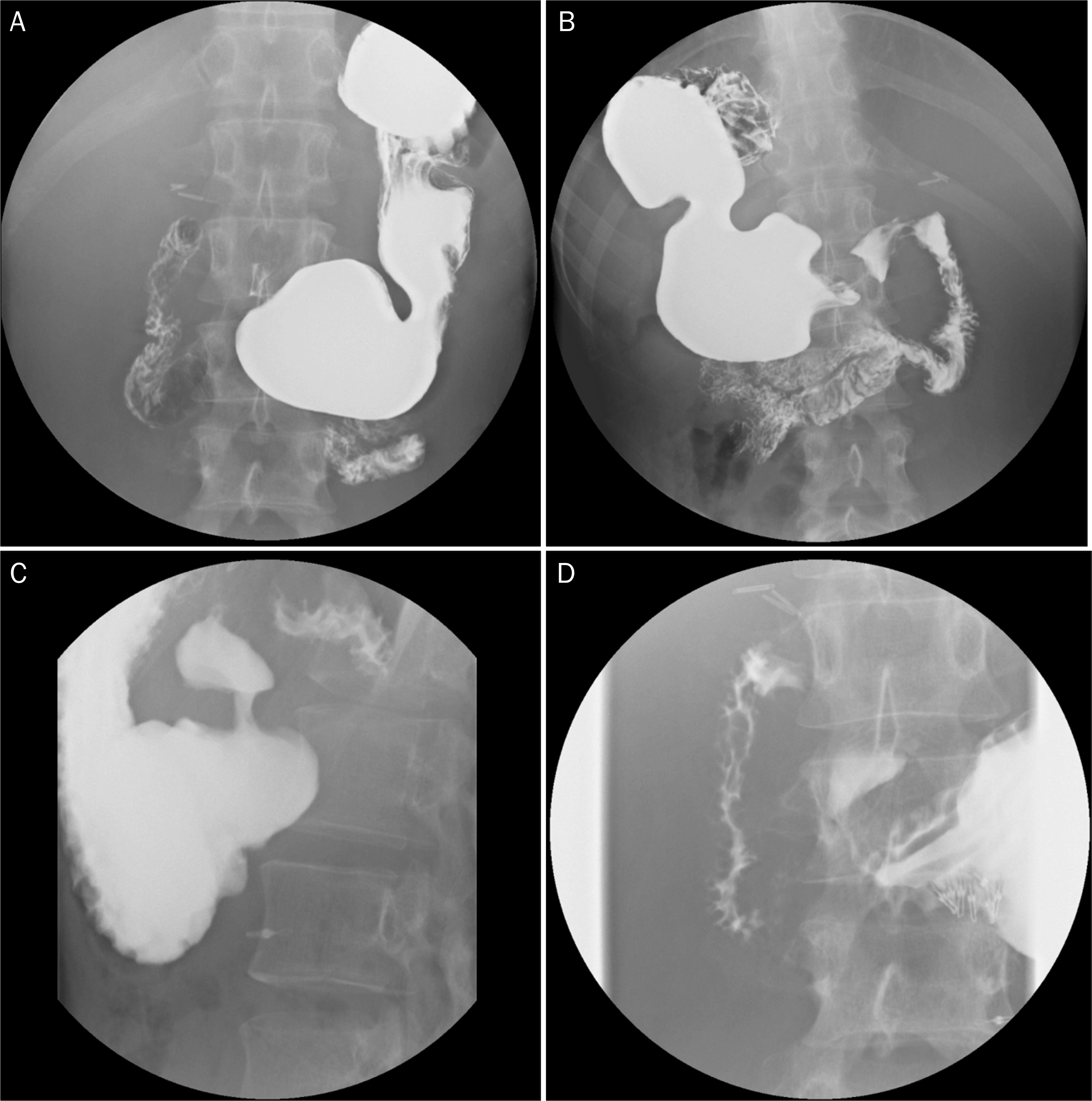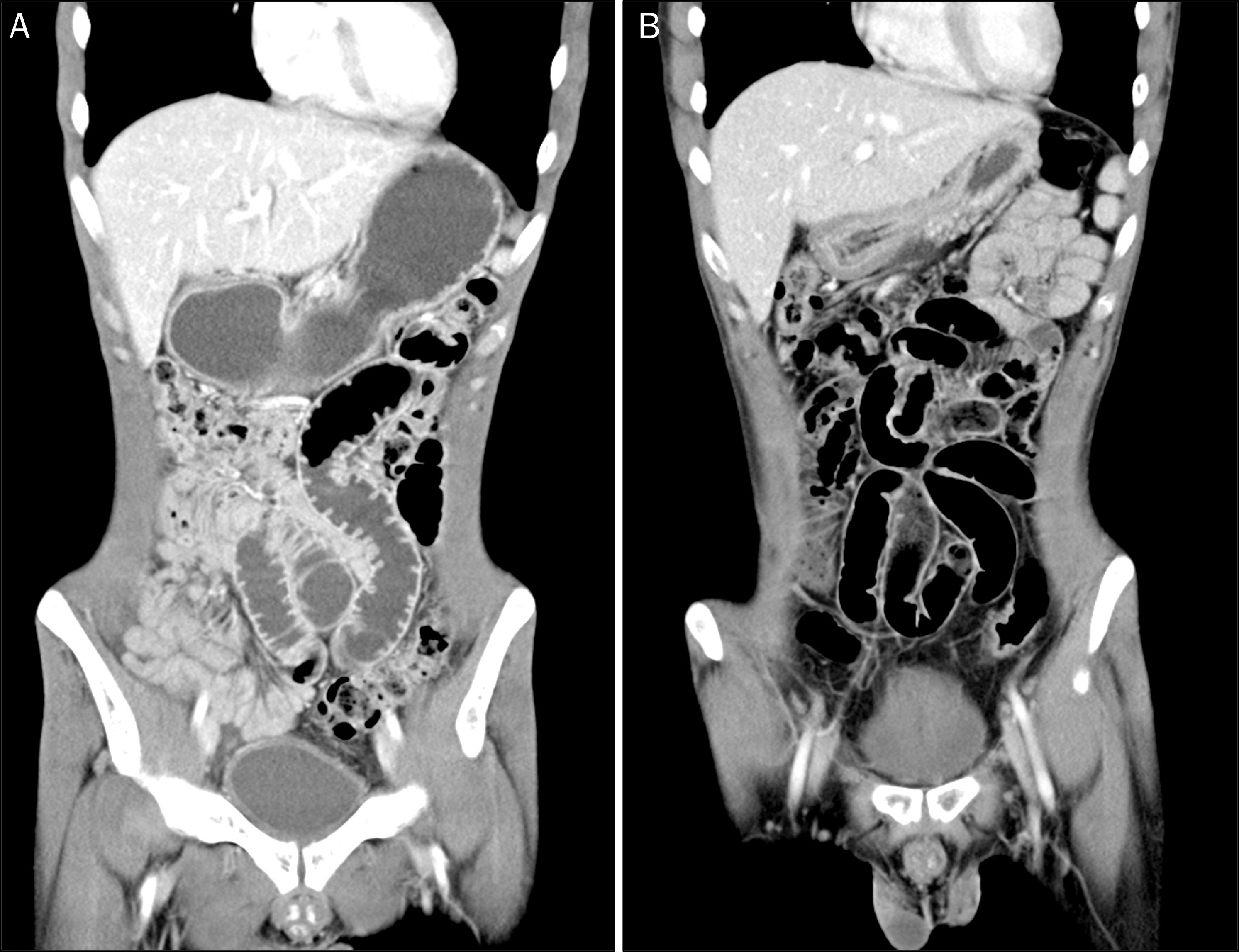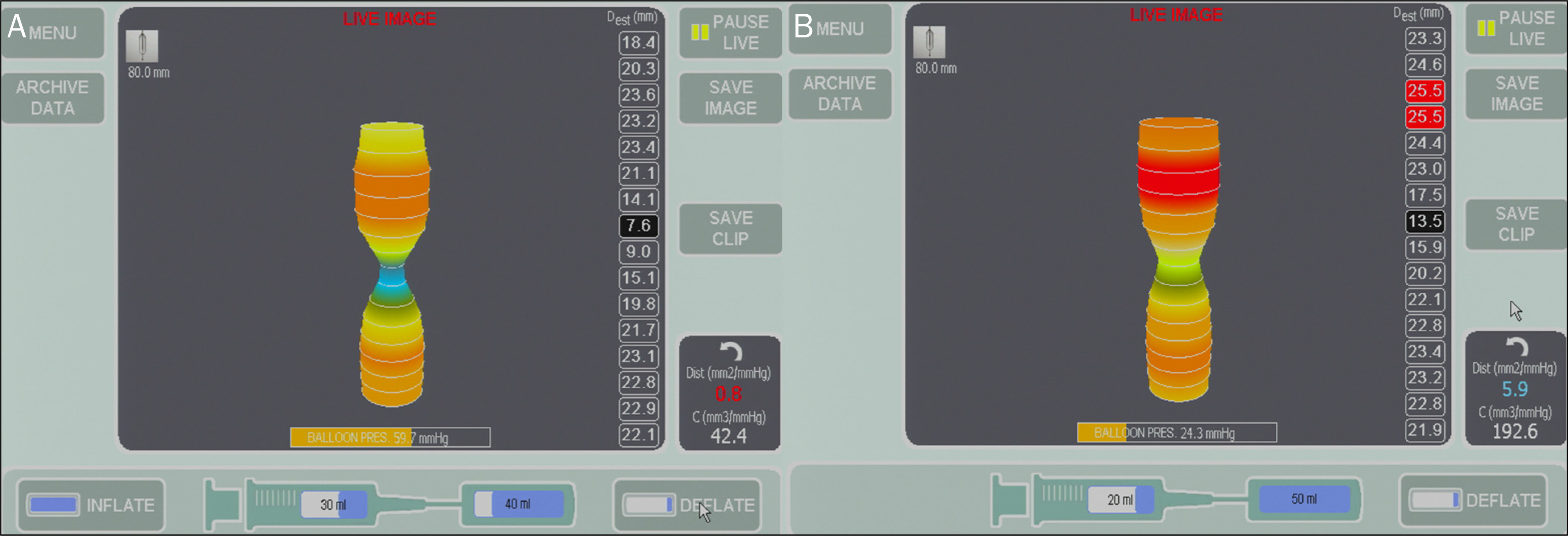Korean J Gastroenterol.
2017 Jun;69(6):377-381. 10.4166/kjg.2017.69.6.377.
Idiopathic Gastroparesis Treated with Gastric Peroral Endoscopic Pyloromyotomy Using Endolumenal Functional Lumen Imaging Probe
- Affiliations
-
- 1Division of Gastroenterology, Department of Internal Medicine, Asan Medical Center, University of Ulsan College of Medicine, Seoul, Korea. hyjung@amc.seoul.kr
- KMID: 2384367
- DOI: http://doi.org/10.4166/kjg.2017.69.6.377
Abstract
- No abstract available.
MeSH Terms
Figure
Reference
-
References
1. Brzana RJ, Koch KL, Bingaman S. Gastric myoelectrical activity in patients with gastric outlet obstruction and idiopathic gastroparesis. Am J Gastroenterol. 1998; 93:1803–1809.
Article2. Revicki DA, Rentz AM, Dubois D, et al. Gastroparesis cardinal symptom index (GCSI): development and validation of a patient reported assessment of severity of gastroparesis symptoms. Qual Life Res. 2004; 13:833–844.
Article3. Revicki DA, Camilleri M, Kuo B, Szarka LA, McCormack J, Parkman HP. Evaluating symptom outcomes in gastroparesis clinical trials: validity and responsiveness of the gastroparesis cardinal symptom index-daily diary (GCSI-DD). Neurogastroenterol Motil. 2012; 24:456–463. e215-e216.
Article4. Revicki DA, Rentz AM, Dubois D, et al. Development and validation of a patient-assessed gastroparesis symptom severity measure: the gastroparesis cardinal symptom index. Aliment Pharmacol Ther. 2003; 18:141–150.
Article5. Pasricha PJ, Parkman HP. Gastroparesis: definitions and diagnosis. Gastroenterol Clin North Am. 2015; 44:1–7.6. Park MI, Camilleri M. Gastroparesis: clinical update. Am J Gastroenterol. 2006; 101:1129–1139.7. Hasler WL. Gastroparesis: pathogenesis, diagnosis and management. Nat Rev Gastroenterol Hepatol. 2011; 8:438–453.
Article8. Parkman HP, Pasricha PJ. Improving our understanding of gastroparesis. Gastroenterol Clin North Am. 2015; 44:xv–xvi.
Article9. Hasler WL. Symptomatic management for gastroparesis: antie-metics, analgesics, and symptom modulators. Gastroenterol Clin North Am. 2015; 44:113–126.10. Camilleri M, Parkman HP, Shafi MA, Abell TL, Gerson L. American College of Gastroenterology. Clinical guideline: management of gastroparesis. Am J Gastroenterol. 2013; 108:18–37. quiz 38.
Article11. Tack J, Vanormelingen C. Management of gastroparesis: beyond basics. Curr Treat Options Gastroenterol. 2014; 12:468–477.
Article12. Jung Y, Lee J, Gromski MA, et al. Assessment of the length of myotomy in peroral endoscopic pyloromyotomy (G-POEM) using a submucosal tunnel technique (video). Surg Endosc. 2015; 29:2377–2384.
Article13. Mekaroonkamol P, Li LY, Dacha S, et al. Gastric peroral endoscopic pyloromyotomy (G-POEM) as a salvage therapy for refractory gastroparesis: a case series of different subtypes. Neurogastroenterol Motil. 2016; 28:1272–1277.
Article14. Khashab MA, Ngamruengphong S, Carr-Locke D, et al. Gastric peroral endoscopic myotomy for refractory gastroparesis: results from the first multicenter study on endoscopic pyloromyotomy (with video). Gastrointest Endosc. 2017; 85:123–128.
Article15. Gonzalez JM, Lestelle V, Benezech A, et al. Gastric peroral endoscopic myotomy with antropyloromyotomy in the treatment of refractory gastroparesis: clinical experience with follow-up and scintigraphic evaluation (with video). Gastrointest Endosc. 2017; 85:132–139.
Article16. Hirano I, Pandolfino JE, Boeckxstaens GE. Functional lumen imaging probe for the management of esophageal disorders: expert review from the clinical practice updates committee of the AGA institute. Clin Gastroenterol Hepatol. 2017; 15:325–334.
Article17. Snape WJ, Lin MS, Agarwal N, Shaw RE. Evaluation of the pylorus with concurrent intraluminal pressure and EndoFLIP in patients with nausea and vomiting. Neurogastroenterol Motil. 2016; 28:758–764.
Article18. Tursi A, Rella G, Inchingolo CD, Maiorano M. Gastric outlet obstruction due to gastroduodenal eosinophilic gastroenteritis. Endoscopy. 2007; 39(Suppl 1):E184.
Article19. Lombardi C, Salmi A, Passalacqua G. An adult case of eosinophilic pyloric stenosis maintained on remission with oral budesonide. Eur Ann Allergy Clin Immunol. 2011; 43:29–30.20. Leal R, Fayad L, Vieira D, et al. Unusual presentations of eosinophilic gastroenteritis: two case reports. Turk J Gastroenterol. 2014; 25:323–329.
Article21. Bachmeyer C, Ammouri W, Ravet N, et al. Pyloric stenosis in an adult with eosinophilic gastroenteritis. Rev Med Interne. 2006; 27:430–431.22. Camilleri M, Szarka LA. POEMs for gastroparesis. Gastrointest Endosc. 2017; 85:129–131.
Article
- Full Text Links
- Actions
-
Cited
- CITED
-
- Close
- Share
- Similar articles
-
- Gastric Peroral Endoscopic Myotomy
- Technical review of gastric per-oral endoscopic myotomy
- Gastric per-oral endoscopic myotomy: Indications, technique, outcomes, and future directions
- A New Paradigm Shift in Gastroparesis Management
- Emerging Roles of the Endolumenal Functional Lumen Imaging Probe in Gastrointestinal Motility Disorders






